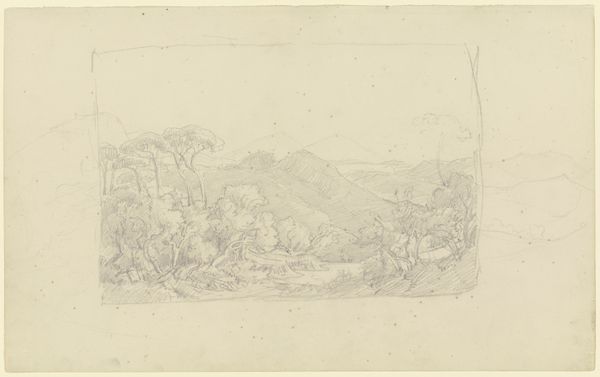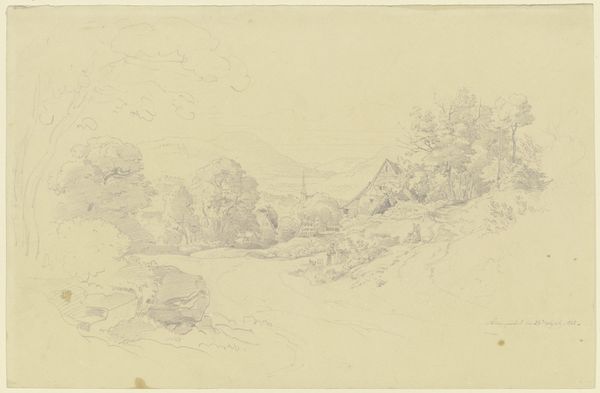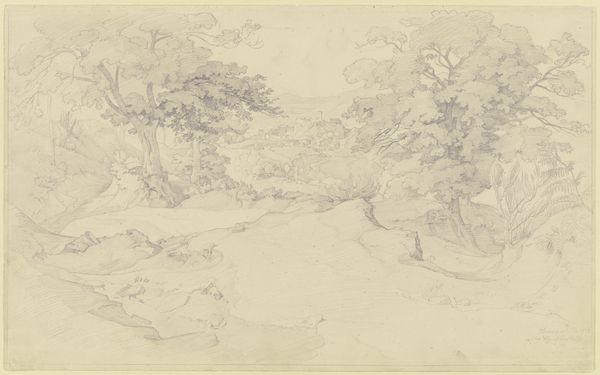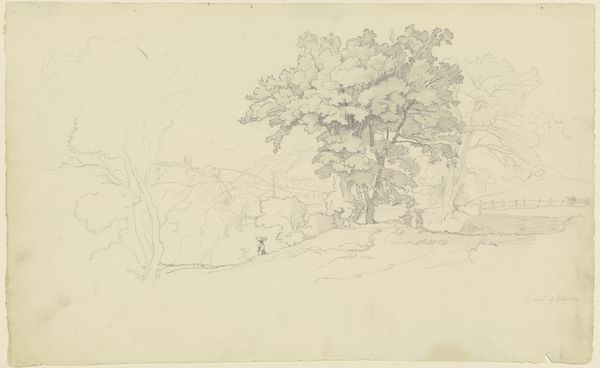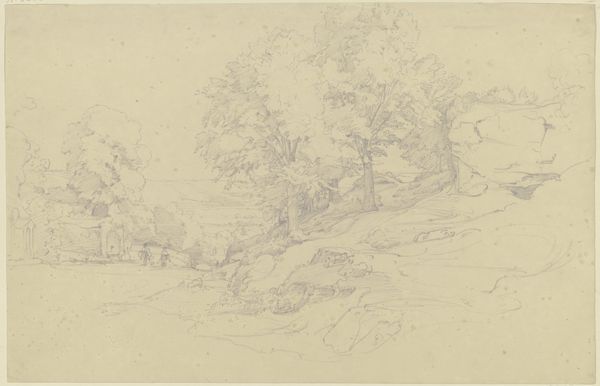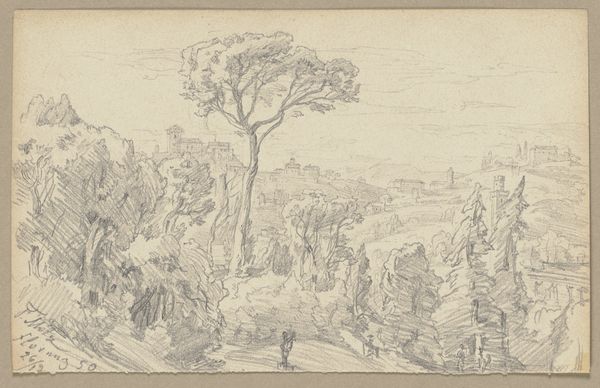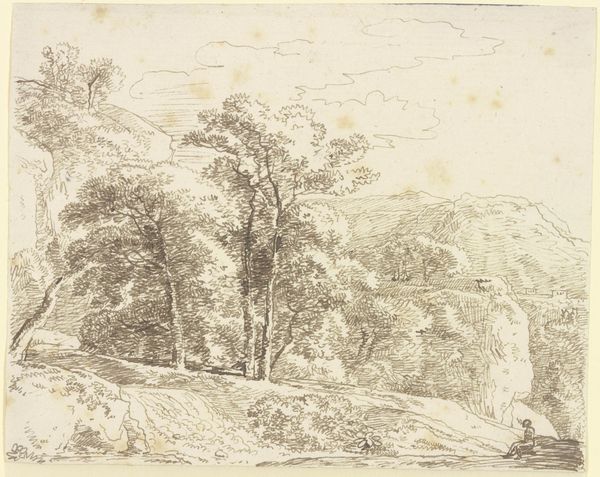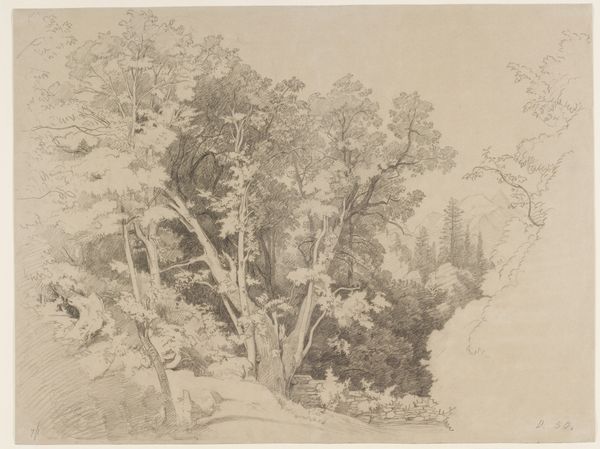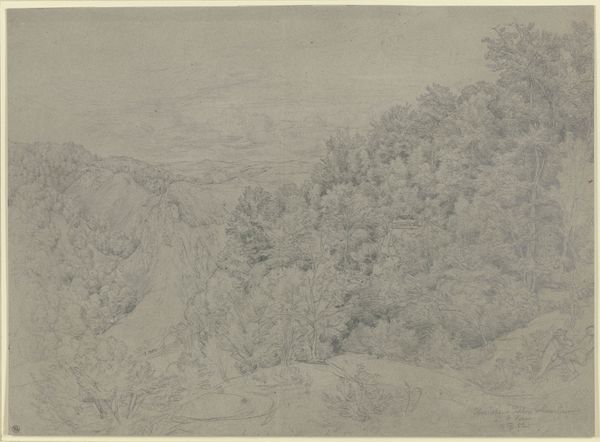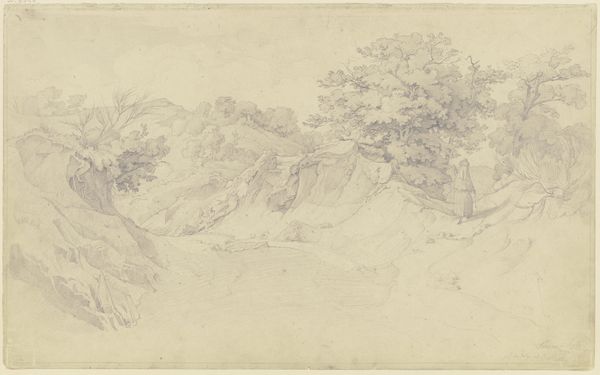
drawing, paper, pencil
#
drawing
#
landscape
#
etching
#
paper
#
personal sketchbook
#
pencil
Copyright: Public Domain
Editor: Carl Morgenstern’s "View of Cervara di Roma", is a delicate pencil drawing. It has this incredibly tranquil feeling; the landscape seems still, almost timeless. What stands out to you as you look at it? Curator: Well, first, I'm drawn to how Morgenstern uses line. Look at how it delicately builds form, not just describing the landscape, but almost feeling the weight of those ancient rocks. This landscape itself is a cultural symbol - do you notice how the village is almost organically growing out of the rock formation? Editor: I do now! It's like the village and the rock are one single entity. Curator: Precisely! Think about the layers of history embedded here: The geological history represented by the rocks themselves, the history of human settlement visible in the village. Each line holds a memory, doesn’t it? Each marking signifying generations who made their mark on the rocks! Editor: So the etching suggests more than just a place; it's a visual encoding of cultural continuity and adaption? Curator: Indeed. Look closely at the small path and small fields around the rocky mountain; these hold emotional and psychological meaning— a symbolic trace, don't you agree? Editor: That’s a very powerful reading. I didn’t expect a simple landscape to be so rich with meaning. Curator: Landscape isn’t just geography, but history. Morgenstern provides access to these memories through rendering; his pencil traces create an enduring visual archive of civilization in nature! Editor: This has definitely made me see landscape art in a new way, it feels alive! Curator: Art has a way of doing that to you, doesen't it? It whispers secrets of our shared history through visual symbols!
Comments
No comments
Be the first to comment and join the conversation on the ultimate creative platform.
